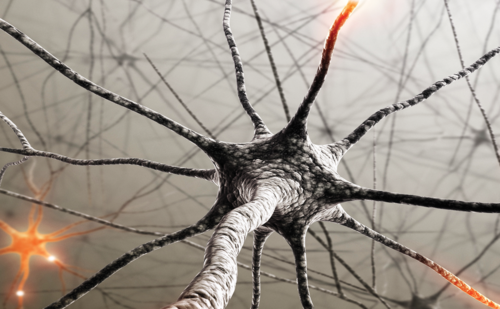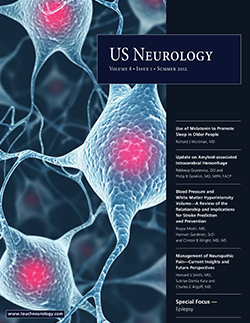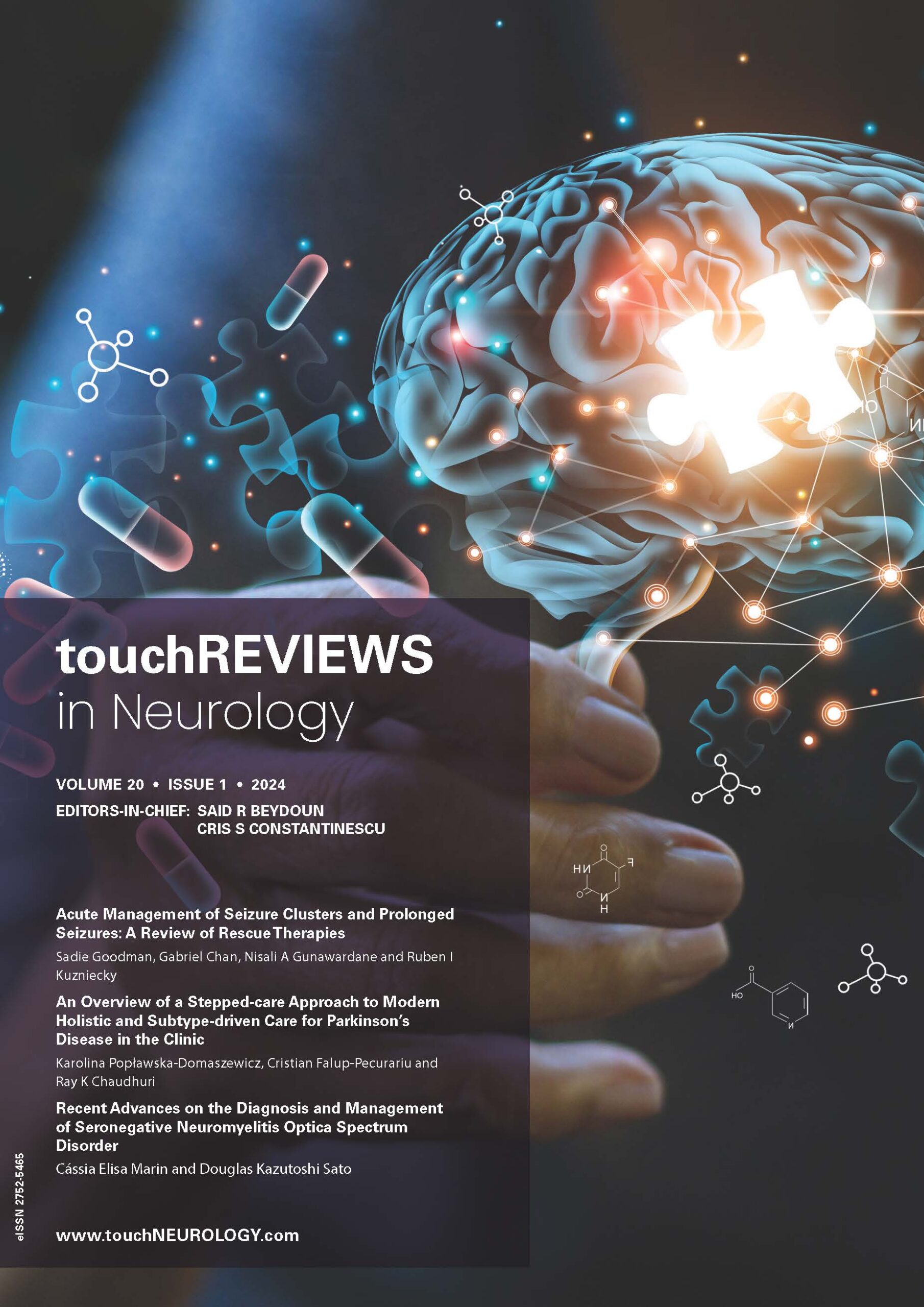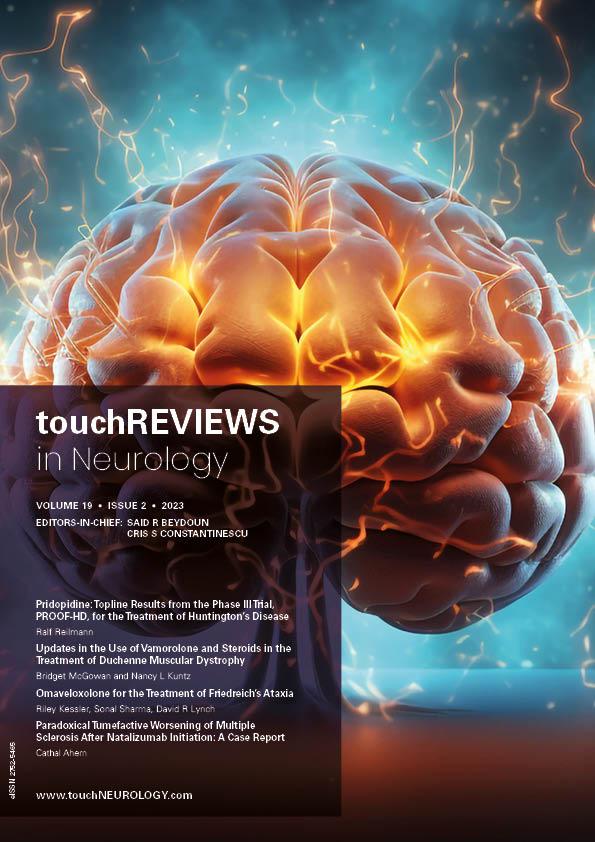US NEUROLOGY – VOLUME 8 ISSUE 1 – SPRING 2012
This issue of US Neurology includes a special focus on epilepsy, with articles on sudden unexpected death in epilepsy (SUDEP), surgery for intractable epilepsy, and a review of treatment for childhood absence. Each of these addresses an issue of special clinical importance. SUDEP is increasingly recognized as a major concern for patients and their families. […]
Editorial
Although very large numbers of older Americans purchase the hormone melatonin and take it nightly to promote and sustain sleep, the US Food and Drug Administration (FDA) does not require that consumers be provided with guidelines concerning its proper dosage nor information about its generally minor side-effects, both of which are obligatory for hypnotic drugs. […]
Movement Disorders
Any surgical procedure requires two things to be successful: selecting the correct patient and performing the operation correctly. The various operations of deep brain stimulation (DBS) for Parkinson’s disease (PD) are not particularly difficult. They comprise a series of steps that must be performed in an appropriate sequence and can be learned by most neurosurgeons […]
Amyloid-related Disorders
Cerebral congophilic or amyloid angiopathy (CAA) is a clinicopathological entity that has been recognised since the early part of the 20th century.1 It is now considered a common cause of primary non-traumatic brain haemorrhage and traditionally it was described in elderly patients who were thought to be normotensive. Because of its frequent association with Alzheimer’s […]
Amyloidoses encompass a heterogeneous group of disorders characterised by the accumulation and extracellular deposition of insoluble aggregates of misfolded fibrillar proteins termed amyloid, which can lead to tissue damage and organ dysfunction.1 They can be exceptionally rare or rather frequent, acquired or hereditary, localised or systemic, quite indolent or life-threatening. Amyloidoses are classified based on […]
Stroke
With the ever-increasing availability and clinical use of brain magnetic resonance imaging (MRI), the frequency of white matter hyperintensities (WMH) has become more readily apparent. As a heavy burden of WMH has been shown to be an important risk factor for incident stroke as well as vascular cognitive impairment,1 it is important to understand the […]
Recovery of neurological functions after a stroke has long been a puzzling question for clinicians and scientists. On the one hand, clinicians knew from their own practice that partial recovery was very often observed after a stroke and on the other hand, it was well known that neurons, when destroyed after ischaemia, were not restored […]
Special Focus – Epilepsy
People with epilepsy have a two- to threefold increased mortality1 and are 24 times more likely to die of sudden death compared with the general population.2 Although injuries associated with seizures, suicides, adverse effects of medications and the underlying aetiology of the epilepsy contribute to this increased mortality, sudden unexpected death in epilepsy (SUDEP) is […]
Neuromodulation Devices Vagus Nerve Stimulation Vagus nerve stimulation (VNS), first used for seizure treatment in the 1880s, was approved by the US Food and Drug Administration (FDA) in 1997 after decades of animal studies demonstrating reduction of chemically induced seizures,1,2 and subsequent promising human trials beginning in the early 1990s. Since FDA approval, VNS technology […]
Childhood absence epilepsy (CAE) is one of the most common forms of paediatric epilepsy, accounting for between 10 and 17 % of all cases of childhood onset epilepsies.1 CAE is defined by age-related onset, clinical and electrographical characteristics, and a presumed genetic aetiology.2 The syndrome typically begins at between four and eight years of age […]
Pain
Neuropathic Pain Definition, Diagnosis and Clinical Presentation

Trending Topic
Opioid therapy has become a mainstay for the treatment of chronic pain, despite evidence that these medications may be ineffective and even unsafe in this patient population.1,2 In patients with chronic back pain, the use of first-line medications (non-steroidal anti-inflammatory drugs and acetaminophen) declined by 48% from 1999 to 2010; simultaneously, there was a 53% rise […]
Journal Archive
touchREVIEWS in Neurology is a peer-reviewed, free-to-access, bi-annual neurology journal comprising review articles, case reports, practice guides, theoretical discussions, and original research. It features balanced and comprehensive articles written by leading authorities, addressing the most important and salient developments in the field of neurology.
Latest articles videos and clinical updates - straight to your inbox
Log into your Touch Account
Earn and track your CME credits on the go, save articles for later, and follow the latest congress coverage.
Register now for FREE Access
Register for free to hear about the latest expert-led education, peer-reviewed articles, conference highlights, and innovative CME activities.
Sign up with an Email
Or use a Social Account.
This Functionality is for
Members Only
Explore the latest in medical education and stay current in your field. Create a free account to track your learning.







